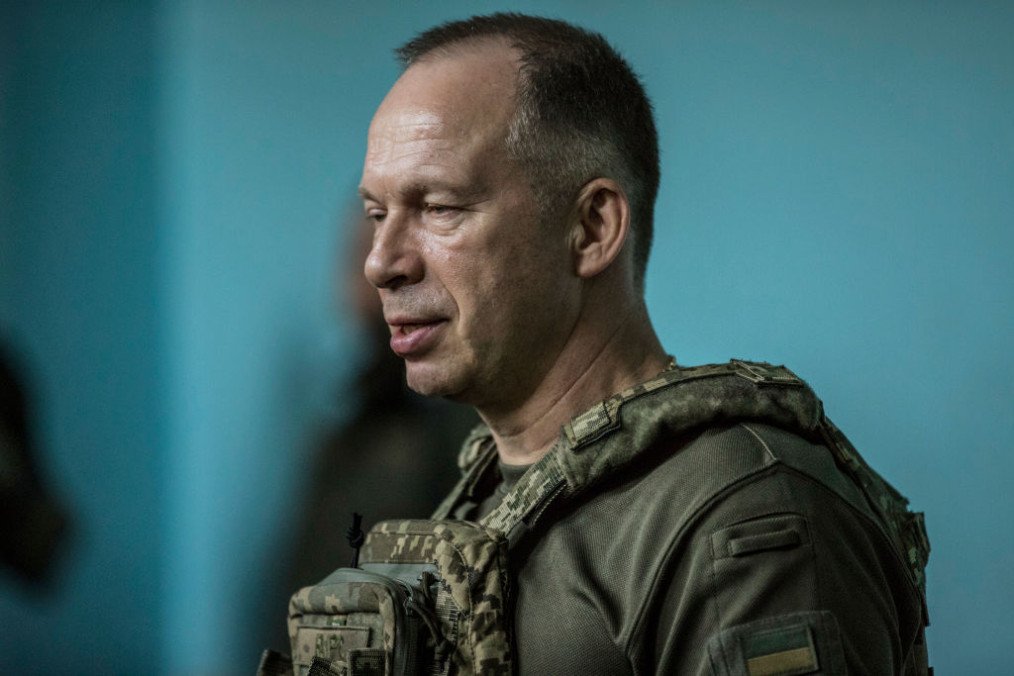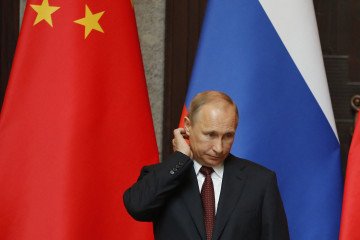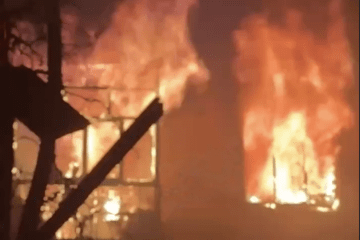Oleksandr Syrskyi, the Commander-in-Chief of the Armed Forces of Ukraine, expressed confidence in the possibility of reclaiming occupied Crimea, in an interview with The Guardian on July 24.
He emphasized that a primary objective for Ukraine is the destruction of the Crimean bridge, which links the occupied peninsula with Russia. However, Syrskyi declined to specify a timeline for this operation, stating, “It’s realistic. Of course, it’s a big military secret.”
He noted that Russia has been compelled to “completely withdraw” from the Crimean port of Sevastopol following a series of Ukrainian assaults. Drone and missile attacks have obliterated radar and missile installations. A primary goal for Ukraine is to demolish the Kerch road and rail bridge that links the occupied peninsula with Russia. Syrskyi did not specify when this would occur, mentioning that previous attempts involved a truck bomb and a drone strike.
Syrskyi underscored Ukraine’s commitment to restoring its internationally recognized borders of 1991, stating, “We will do everything possible to reach the internationally recognized borders of 1991. We must win to free our citizens who are in the occupied territories and who are suffering.” He revealed that Ukrainian forces had successfully compelled Russian occupiers to withdraw completely from the Crimean port of Sevastopol after a series of targeted attacks had destroyed radar and missile installations.
Syrskyi highlighted several positive developments. He noted that the acquisition of F-16 fighter jets would bolster Ukraine’s air defenses, enhancing its ability to counter Russian cruise missiles and accurately target ground positions. However, he cautioned that the effectiveness of F-16s would be limited by the need to keep them “40km or more” from the frontline to avoid being shot down by Russian forces.
Russia has “superior aviation” and “very strong” air defenses, prompting Ukraine to increasingly rely on unmanned aerial systems, Syrskyi explained. Ukraine has used drones “very effectively” and is experimenting with “robotic ground systems"—land robots capable of delivering ammunition or rescuing wounded soldiers. A new unmanned systems command, the first of its kind, has been established. “We fight not by quantity but quality,” Syrskyi said, emphasizing that drones play “as big a role as artillery.”
Ukraine’s armed forces have been successfully deploying long-range attack drones to strike deep inside Russia, targeting “about 200 critical infrastructure sites” related to “military logistics,” including factories, fuel depots, and munition warehouses. Additionally, speedboat-like sea drones have sunk roughly a third of Russia’s Black Sea naval fleet. “It really became a trap for them and for some [vessels] a grave,” Syrskyi remarked.
Syrskyi acknowledged that the Russians are far better equipped, possessing more tanks, infantry fighting vehicles, and soldiers. The initial invasion force of 100,000 has grown to 520,000, with a target of reaching 690,000 by the end of 2024.
“In terms of equipment, there is a 1:2 or 1:3 ratio in their favor,” Syrskyi noted. Since 2022, the number of Russian tanks has increased from 1,700 to 3,500, artillery systems have tripled, and armored personnel carriers have risen from 4,500 to 8,900. “The enemy has a significant advantage in force and resources,” Syrskyi said. “Thus, the issue of supply and quality is crucial for us.”
Russia’s successes on the battlefield have come at an immense human cost. Syrskyi stated that Kremlin casualties are “three times” higher than those of Ukraine, and “even more” in certain areas. “Their number of killed is much greater,” he emphasized. In February, President Volodymyr Zelenskyy reported that 31,000 Ukrainian service members had died since 2022.
Earlier in July, President of Ukraine Volodymyr Zelenskyy stated in an interview with BBC that around 20,000 of Russia’s military personnel were killed in action during its spring offensive in Kharkiv.
Syrskyi also contrasted his tactical approach with that of Russian commanders, who often sacrifice large numbers of infantry for minimal territorial gains. “It’s very important for us to save the lives of our soldiers. We don’t defend ruins to the death,” he said. Syrskyi emphasized that he was unwilling to “achieve goals at any cost” or engage in “futile meat assaults,” with a necessity to reposition to “more favorable positions.”
Additionally, Syrskyi emphasized the importance of the mobilization, stressing that without it he could not establish new reserves and brigades, which are crucial as Russia expands its own ground forces. “It’s very important for us that all citizens of Ukraine fulfill their constitutional duty,” he stated, urging Ukrainians living abroad to participate as well.”
One initiative is emerging in neighboring Poland, where Ukrainians abroad will soon be invited to join a new legion. Training will take place in Poland, fostering trust between soldiers and officers.
-ba02b3bc86f0b624f99115809a6a34d0.jpg)


-111f0e5095e02c02446ffed57bfb0ab1.jpeg)


